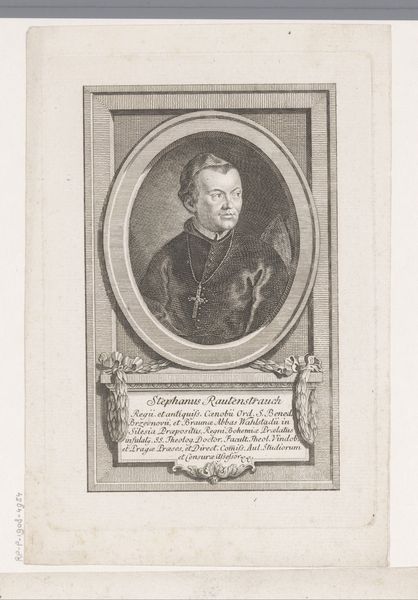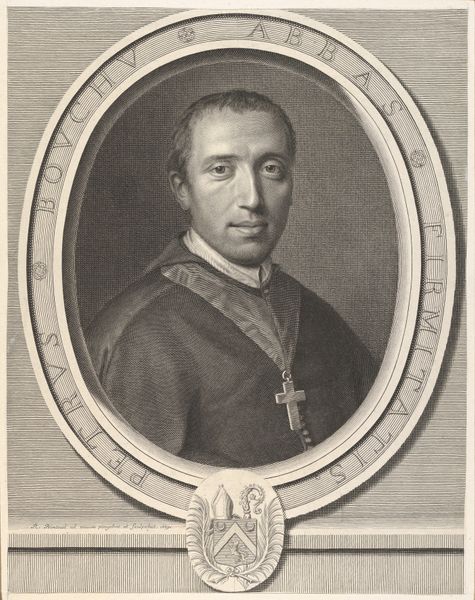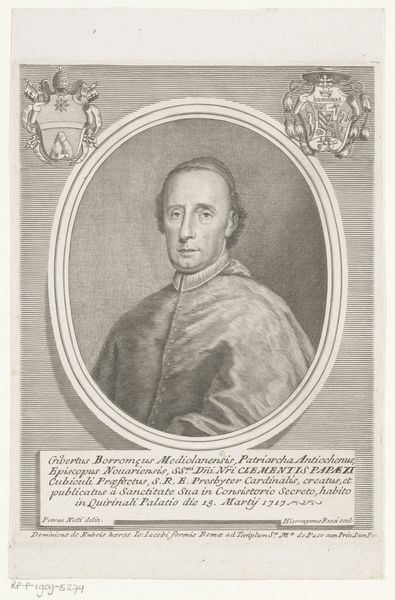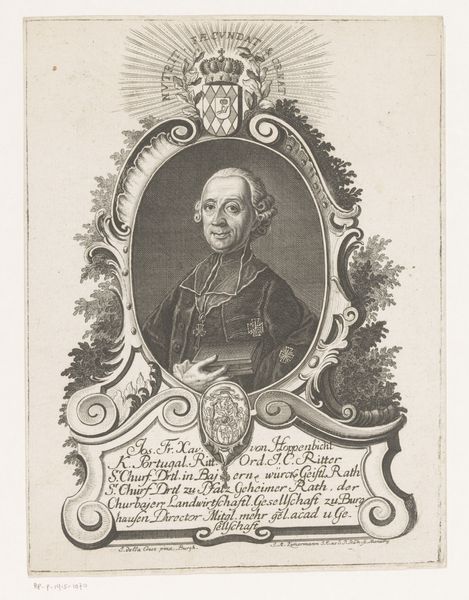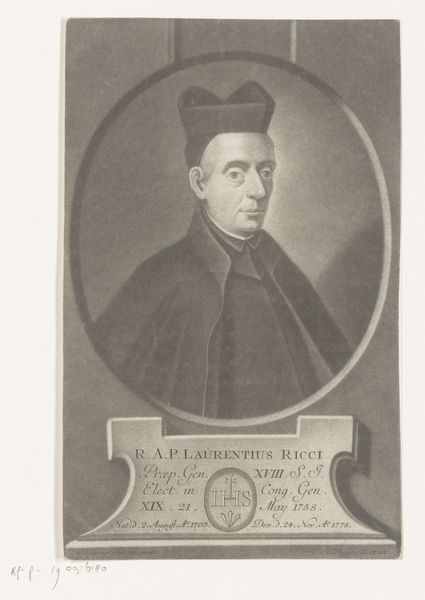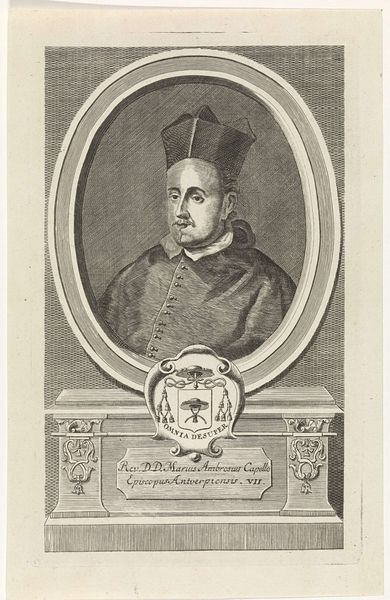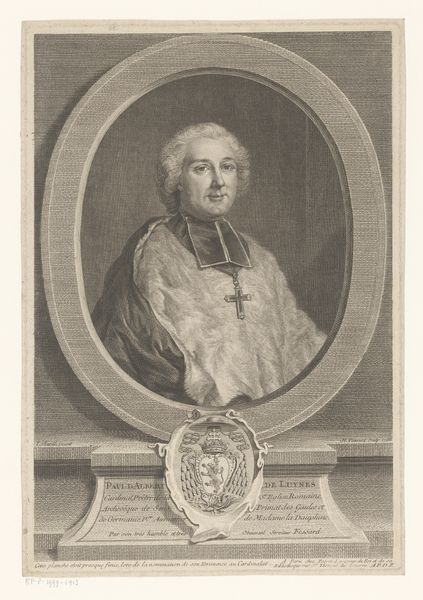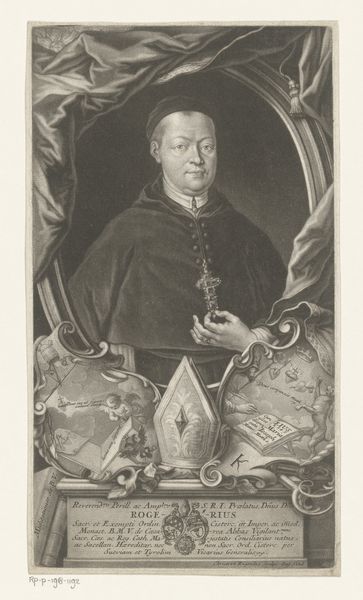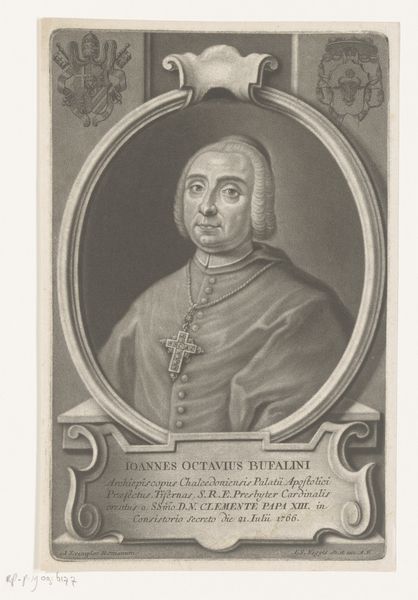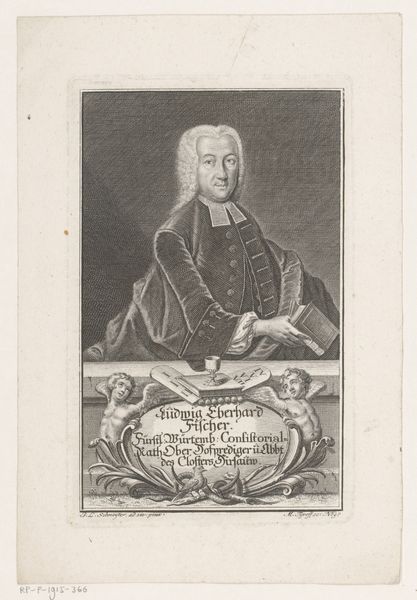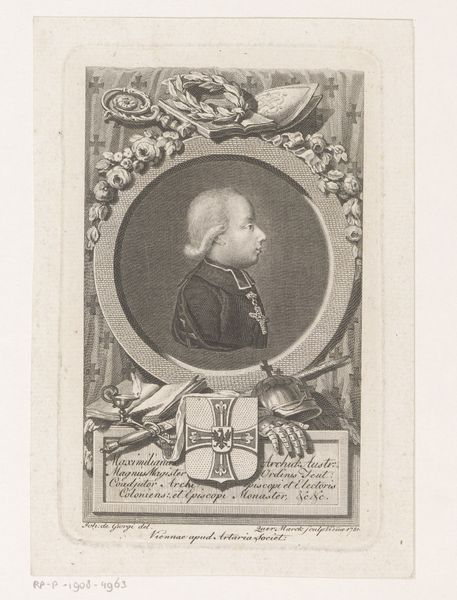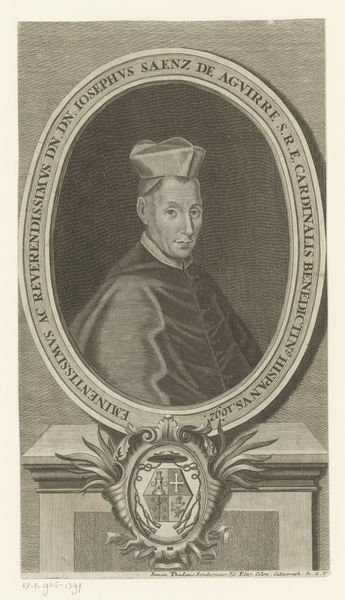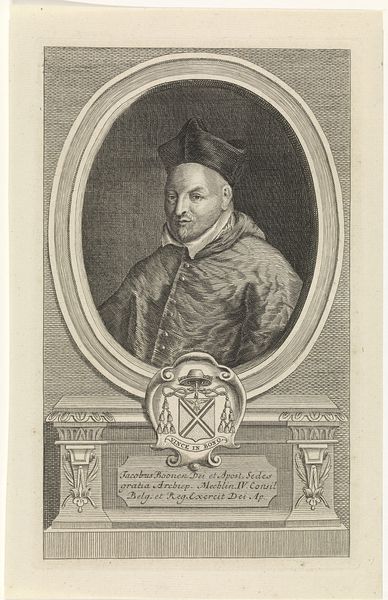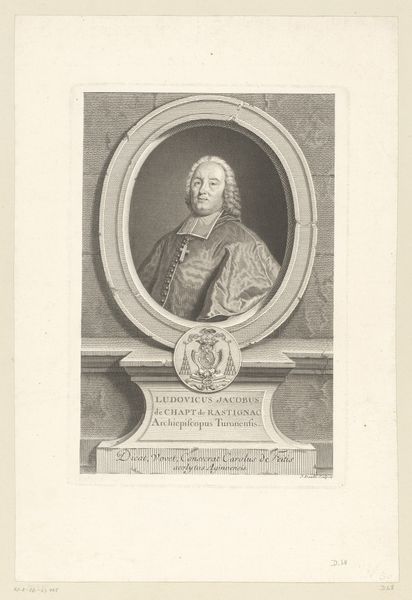
Dimensions: height 251 mm, width 160 mm
Copyright: Rijks Museum: Open Domain
Editor: So, this is "Portret van Clemens XIV" by Johann Simon Negges, sometime between 1736 and 1792. It's an engraving, and the details are impressive! What really stands out to me is the intricate oval frame around the portrait. What do you see in this piece? Curator: Structurally, I observe a deliberate hierarchy of forms. The oval dominates, encapsulating the figure. Notice how its curvature is echoed in the shell-like ornamentation at the top and bottom, creating visual harmony. The two crests at the upper corners act as formal anchors, balancing the composition. Editor: That's interesting. I was just focusing on the face itself. Curator: Indeed. The face, however, functions as a focal point through contrast. Observe the smoothness of the face against the patterned details of the robes. This contrast pulls the eye directly to the facial expression. Note also the way the engraving captures light and shadow to model the form, providing it with remarkable three-dimensionality. Editor: So, you're saying it's not just about who's in the portrait, but about how the shapes and lines all work together? Curator: Precisely. While the subject possesses inherent historical interest, from a formalist perspective, the engraving is most compelling as an intricate system of visual relationships. It uses contrast, curvature and visual balance to achieve its effects. Do you perceive any dissonance in these relationships? Editor: Now that you point it out, I see the oval is echoed, the lines guide the eye to the face and create balance and harmony in what seemed like just a portrait. It’s more complicated, but rewarding. Curator: I agree, this structured reading allows one to understand art not just for its context, but for its inherent construction and impact.
Comments
No comments
Be the first to comment and join the conversation on the ultimate creative platform.
